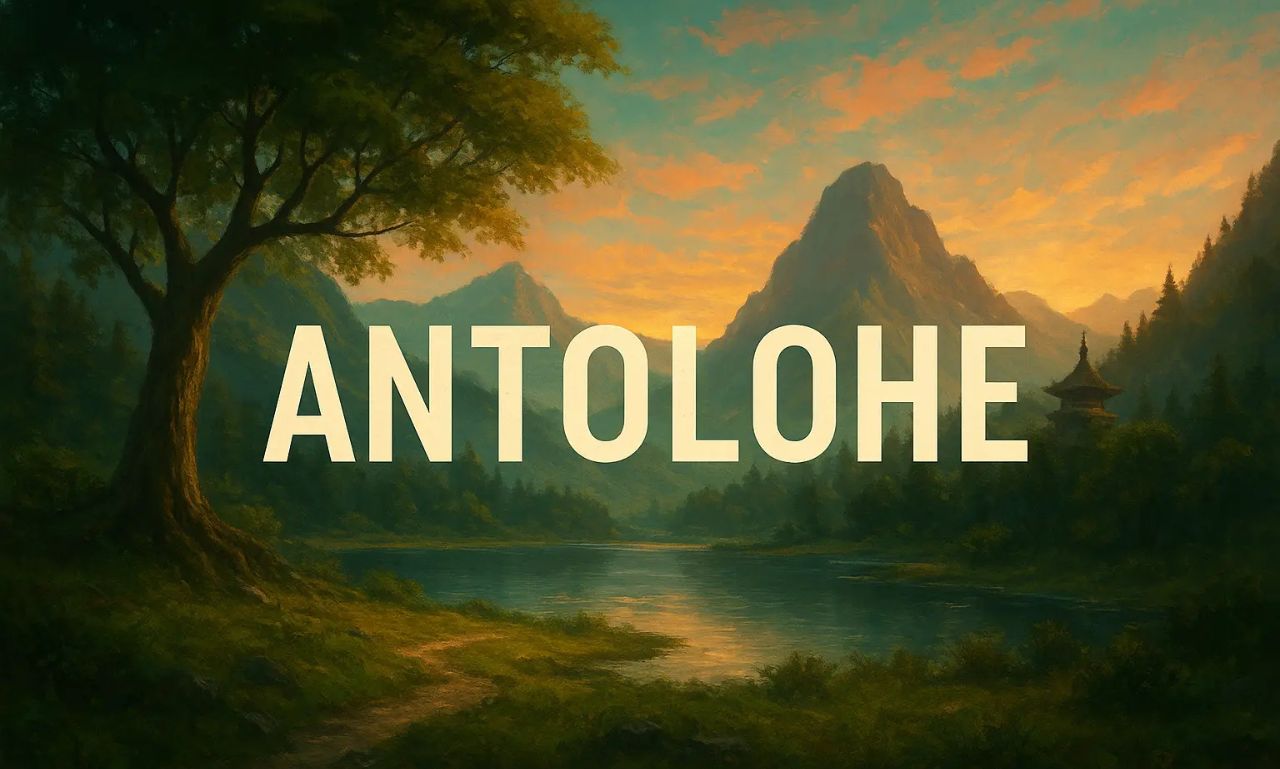Antolohe has emerged as a captivating subject of interest across various cultural landscapes. This unique term, steeped in rich history and tradition, continues to resonate with individuals today. As we dive deeper into the concept of Antolohe, we’ll uncover its fascinating origins and explore how it has evolved over time. From ancient practices to modern adaptations, Antolohe is more than just a word; it’s a bridge connecting past and present. Join us on this journey as we unravel the layers behind Antolohe and discover why it remains relevant in our lives today.
What is Antolohe?
Antolohe is a fascinating concept that draws from rich cultural roots. It embodies various meanings depending on context, often linked to traditional practices and community values.
At its core, Antolohe represents the idea of interconnectedness. This can manifest in social structures, art forms, or spiritual beliefs within specific cultures. Individuals who embrace Antolohe find themselves weaving together history and identity.
In many expressions of Antolohe, storytelling plays a crucial role. Tales passed down through generations reveal wisdom and moral lessons intrinsic to this practice.
Moreover, it encompasses rituals that foster unity among participants. These gatherings provide an opportunity for members to connect deeply with one another while honoring their heritage.
As modern society evolves, so does the understanding of Antolohe. Its essence continues to adapt while maintaining strong ties to tradition and meaning within communities worldwide.
The History and Origins of Antolohe
Antolohe has deep roots that trace back to ancient traditions. It emerged from the cultural practices of indigenous communities, where it was often intertwined with spiritual beliefs.
Historically, Antolohe served as a means of connection between individuals and their ancestors. It carried stories and teachings passed down through generations, preserving rich heritage.
Over time, its significance evolved. As societies changed, so did the interpretations and uses of Antolohe. The essence remained intact while adapting to new contexts.
Artifacts related to Antolohe have been discovered in archaeological sites, showcasing its importance across various eras. These findings highlight how this concept influenced daily life and rituals.
Today, scholars continue to explore these origins. Their research offers insights into the intricate tapestry of human experience shaped by Antolohe throughout history.
Modern Uses and Adaptations of Antolohe
Antolohe has found its way into various modern applications, reflecting its evolving nature. Artists and performers often draw inspiration from this concept, integrating it into music and dance. This fusion creates a unique blend of traditional elements with contemporary styles.
In the wellness sphere, is embraced for mindfulness practices. People use its principles to cultivate awareness and presence in their daily lives. Workshops focusing on these teachings have gained popularity.
Fashion designers are also tapping into the aesthetics of Antolohe. They incorporate motifs and colors inspired by its essence, bringing ancient beauty to modern wardrobes.
Social media plays a role too; influencers share experiences related to philosophy, making it more accessible. The hashtag #Antolohe trends as people explore its meanings through personal stories and visuals that resonate deeply within communities worldwide.
Cultural Significance of Antolohe
Antolohe holds a unique place in the cultural tapestry of many communities. It is more than just a concept; it embodies shared beliefs and traditions.
In various cultures, serves as a symbol of unity and identity. Rituals surrounding its practice foster connections between individuals, strengthening communal bonds.
Many art forms draw inspiration from Antolohe, whether through storytelling, music, or dance. These creative expressions keep the essence alive across generations.
Additionally, influences local customs and celebrations. Festivals celebrating this tradition often attract visitors eager to learn about its significance.
Its relevance extends into contemporary discussions about heritage preservation. By embracing Antolohe, societies can honor their past while navigating modern challenges.
How to Incorporate Antolohe into Your Life
Incorporating Antolohe into your life can be a fulfilling experience. Start by exploring its roots through literature and art. Delve into stories that reflect essence, allowing you to connect more deeply.
Consider adopting practices inspired by in daily routines. This could mean mindfulness exercises or community gatherings that resonate with its spirit. Engaging with local cultural events can enhance your understanding and appreciation.
Cooking traditional dishes associated with serves as another beautiful way to honor it. Share these meals with friends or family, creating moments of connection and reflection.
Keep an open mind about integrating the philosophy behind Antolohe into conversations and personal growth initiatives. Embrace dialogue around its significance, encouraging others to explore this path alongside you.
Controversies Surrounding Antolohe
Controversies surrounding Antolohe often stem from its interpretations and practices. Some critics argue that certain modern adaptations dilute its traditional significance, shifting focus away from historical roots.
Another point of contention is the commercialization. As it gains popularity, some fear that genuine cultural expressions are being overshadowed by profit-driven motives. This raises questions about authenticity and respect for traditions.
Additionally, there are debates within communities regarding who has the right to practice or teach Antolohe. These discussions can spark tensions among practitioners eager to preserve their heritage versus those looking to innovate or adapt.
The intersection between tradition and modernity continues to fuel these controversies. As society evolves, so too do perceptions of what represents in contemporary life. Balancing respect for history with fresh interpretations remains a challenge for many involved in this rich cultural tapestry.
The Enduring Legacy of Antolohe
The legacy of Antolohe stretches across generations, weaving itself into the fabric of cultural identity. Its roots run deep in history, serving as a repository for stories and traditions that define communities.
As contemporary society evolves, so does. It finds new expressions through art, music, and literature. This adaptability has allowed it to resonate with younger audiences while preserving its core values.
Communities continue to celebrate through festivals and gatherings. These events not only honor tradition but also foster connection among people from diverse backgrounds.
In educational contexts, discussions surrounding Antolohe encourage exploration of heritage and shared experiences. Such dialogues promote understanding and appreciation for cultural diversity.
Its enduring influence is evident in various aspects of modern life—from social movements advocating justice inspired by historical lessons to daily practices that echo ancient wisdom.
Conclusion
Antolohe serves as a fascinating lens through which we can explore culture, tradition, and modernity. Its rich history informs not just its origins but also the significance it holds in contemporary society. As people continue to adapt and reshape for modern use, its relevance becomes even more pronounced.
The cultural implications of resonate across various communities, demonstrating how traditions can persist and evolve over time. Whether you choose to embrace its principles or simply appreciate its historical context, integrating aspects of into daily life invites reflection on values that matter.
Despite facing controversies that challenge its authenticity or relevance today, the essence of remains strong. It embodies resilience and adaptability—qualities that speak volumes about human experience.
As conversations around this topic continue to grow, so too does our understanding of what makes practices like Antolohe significant in a rapidly changing world. This ongoing dialogue ensures that the legacy of will endure for generations to come.

